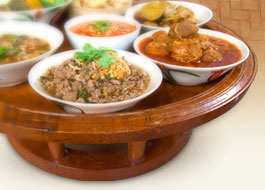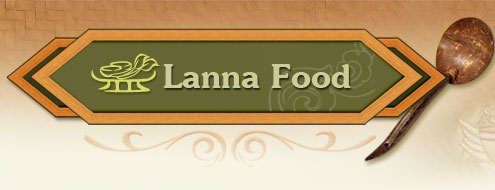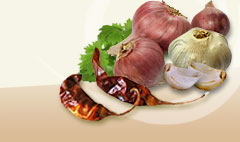Lesser ginger |
|
|
 | Boesenkergia Pandurata Holtt. |
|
| |
 | Zingiberaceae |
|
| |
 | Lesser ginger |
|
| |
 | Hua la-an, Hua-ka-an (Northern); Ka-an Khing sai (Mahasarakham) (Chiradet and Arunya Manosoi, 1994); Khing daeng, Khing sai (Northeastern) (Wut Wuthithamwet, 1997, p. 72); Chip-pu, Si-phu (Shan-Mae Hong Son); Po-si, Po-so-ro (Karen-Mae Hong Son), Kachai, Wanphra A-thit (Bangkok) (Chiradet and Arunya Manosoi, 1994, p. 66) |
|
| |
 | Perennial, 2-3 ft. high, underground rhizomes; storage roots cylindrical, slender, acute at the tip. There are 3 kinds: black, red and yellow. The yellow kind is the most popular. (Krachai lueang). Propagated by rhizomes. (Wut Wuthithamwet, 1997, p. 72) |
|
| |
 |

Roots give a spicy flavor to enhance the smell of meat, the rhizomes give a fragrance oil. (Rattana Phromphichai, 1999, p. 202). The plant contains carbohydrates, fiber, protein, calcium, phosphorus, iron, Vitamins A, B1 and B2 (Phak Phuen Ban A-han Phuen Mueang, 2007, p. 28). Roots are used in nam ya curry to be eaten with rice noodles. Tender stems can be eaten with somtam, kaeng no mai, sup no mai or namphrik. (Rattana Phromphichai, 1999, p. 202). It can also be added in the curry for khao soi. |

The rhizomes can be used to treat canker sores, to induce urination, treat dysentery, stomach upset, leucorrhea (Department of Agricultural Extension, 2007)
Lanna Pharmaceutics Indication: Treatment of urinary tract infections, ringworm, upset stomach (Chiradet and Arunya Manosoi, 1994, p. 66)
Modern Thai Medicine: it can be used as an antibacterial (especially Bacillus subtilis) also against bacteria in the intestines and those causing indigestion. The oil is a tonic and helps get rid of excessive gas (Chiradet and Arunya Manosoi, 1994, p. 66)
|
|
| |
 | All year round |
|
| |
 |
Department of Agricultural Extension. (2007). Phak Phuen Ban. Retrieved
June 10, 2007, from http://singburi.doae.go.th/acri (in Thai). Chiradet and Arunya Manosoi. (1994). Pesatchakam Lanna: Lanna Medicinal Formulas. Bangkok: Institute of Traditional Thai Medicine, 1994. (in Thai). Phak Phuen Ban A-han Phuen Mueang . (2007). Bangkok: Fai Aphai Co., Ltd. (in Thai). Rattana Phromphichai. (1999). Ka-Aen. In Saranukrom Wattanatham Thai Phak Nuea. (Vol. 1, p. 202). Bangkok: The Siam Commercial Bank Foundation for the Encyclopedia of Thai Culture. (in Thai). Wut Wuthithamwet. (1997). Saranukrom Samunphrai: Ruam Lak Pesatchakam Thai. Bangkok: Odean Store, 1987. (in Thai). |
|
| |
|
|




